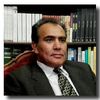Although the power structure in Iran remains under the control of hard-liners, the Iranian political world is evolving. The increasing openness of Iranian civil society, encouraged by the successful diplomacy of Presidents Obama and Rouhani, fed the success of moderate reformists in last Friday's Iranian elections. More than a victory for reform and moderation, it is also a victory for the nuclear agreement.
Despite all this, conservatives still control the institutions of state and especially the security structures, and Iranian 'moderates' are only moderately moderate. Still, the consolidation of the idea of reform and the support for reformist candidates - particularly in Tehran - is full of significance. The resounding success of President Rouhani, the principal proponent of the nuclear agreement, re-elected alongside his mentor, former President Rafsanjani, constitutes a rebuke to adversaries of the nuclear agreement. Affirmation of Rouhani means consolidation of his domestic policies for relative openness, and a boost for diplomacy. Most regional conflicts, could be de-escalated through mediation and diplomacy, while improving bilateral relations with the US could increase collaboration, and ramp up pressure on Da'esh (ISIL,ISIS,IS).
The Rigged Electoral System
A compromise among republican (elected) and theocratic (unelected) institutions has created what may be called a pre-democracy based on a tense equilibrium between republican and theocratic principles. The Supreme Leader (Rahbar), is still the center of gravity of Iranian political power. He is appointed for life by the Assembly of Experts composed of 88 top clerics, and has final say on all important political issues. He appoints the heads of the Revolutionary Guards (IRGC) and the Army, the Head of the Judiciary, as well as the official in charge of state broadcast media and a slew of other entities. He also appoints the clerical Members of the Council of Guardians.
On a national level, elections are held for Parliament, and for the Assembly of Expert. But the Council of Guardians decides who may run, and who may not. The Council has twelve members: Six Clerics appointed directly by the Supreme Leader, and six Islamic Law Jurists appointed by the Chief of the Judiciary - who is himself appointed by the Supreme Leader. In this way, the Supreme Leader directly or indirectly controls all elections, and thus the legal rights of every Iranian citizen. Indeed, such a concentration of power is based on theocratic principles, which have some popular support, but so do republican principles, which hold that state power derives from the people and is based on citizenship rights. Thus, there are two forces tugging Iranian society in opposite directions.
A Chink in the Armor: The Assembly of Experts
The power of the Supreme Leader and the Council of Guardians, great as it is, is not quite absolute. The Assembly of Experts, elected by the people (admittedly from pre-selected lists of candidates), selects the Supreme Leader. The current Supreme Leader, Ayatollah A. Khamenei, is 76 years old (born July 16, 1939). The term of the Assembly of Experts elected lasts until 2024; they just might get to choose the next Supreme Leader, or at the very least plan for it - making this election especially important. Since the Assembly of Experts has very real (albeit infrequent) power, some members of the Council of Guardians presented themselves as candidates.
Moreover, before the February 26, 2016 vote, nearly 80% of the candidates who applied for the Assembly were disqualified by the Guardian Council (including every female), while the rejection rate for Parliamentary candidates reached nearly 90%.
Re-Engineering towards a Modern Republic
As payback, the voters rejected pro-Theocracy and Guardian Council candidate: Some are now out of the Assembly of Experts, and some have suffered a reduction in power and influence. Two top clerics, M. Yazdi and M.T. Mesbah-Yazdi, were completely rejected by the voters, while Guardian Council Chairman Ahmad Jannati barely squeaked through, coming in last place. These three hard-line clerical defenders of theocratic principles - and principal engineers of the disqualifications that slashed reformers from the candidate lists - have now been re-engineered by Iranian civil society. Top spots in the Assembly of Experts have gone to less hard-line candidates. Indeed: Former President Rafsanjani and current President Rouhani were among the top winners on the list in Tehran. Election results show that in Parliament, too, hard-liners have lost ground.
Brilliantly leveraging the only power open to them, voters have shown that they want a change of direction. Following debate and discussion among that portion of Iranian society who go to the polls (about 60%), it seems the voters have taken aim at the very heart of entrenched power. The issue is not whether any one particular candidate is elected or not elected; the real debate is on the center of gravity of the power structure. It is the debate between republicanism and theocracy. Where they could, by their votes, Iranians have demonstrated support for republican principles and for democratization of the theocratic center of power. The result of this debate will determine the future of Iran and the whole Middle East and surrounding region.
